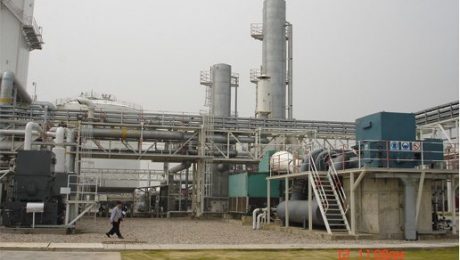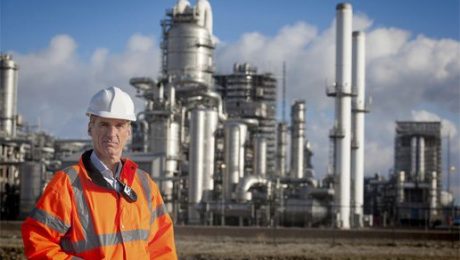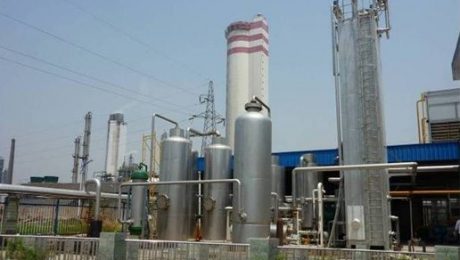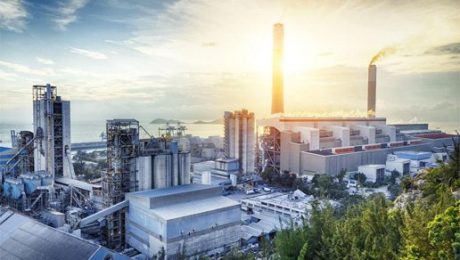Nitrogen—Industry salt
Monday, 21 August 2017
1.Nitrogen-filled packaging, nitrogen filling bulbs.Chemical properties (using chemical properties is stable, normal temperature is very difficult to react with other material “) food, canned, fruit and etc.usually use nitrogen for corrosion protection.The nitrogen filling in a light bulb, can prevent the tungsten oxide and slow down the utilization rate of tungsten filament, prolong the bulb’s service life . 2.Chemical synthesis is important raw materials of synthetic fiber (nylon, acrylic), synthetic resin, synthetic rubber and other , also can produce fertilizer. 3.Production car tyres, nitrogen filling tyre can improve the stability and comfort during driving, preventing blowout and grinding line due to deficency , prolong the service life of tires, reduce fuel consumption, protect the environment. 4.Used as shielding gas, normally, Nitrogen’s chemical nature doesn’t very lively, so it is
Various usages of gas oxygen in all kinds of industries
Thursday, 17 August 2017
Metal welding, cutting and a variety ofcombustion-supporting gas for combustion systemand some oxidizing gas technical process gas, etc. Metallurgical industry, including steel, non-ferrous metal smelting process, all have extensive use of oxygen, it is obviouslystrengthening smelting processand increase energy efficiency. Machinery industry: metal welding, cutting can greatly improve the working efficiency Chemical industry: manufacturing pharmaceutical, dyestuff, explosives and other chemical products, in addition to strengthen the production (such as the production of yellow phosphorus by oxygen blowing method, spray oxygen carrier coal, etc.) Electronic industry: except for combustion-supporting gas or gas oxide semiconductor integrated circuit,oxygenis one of the indispensable high purity gases in the line.Additionally, it is the important raw material of gas optical fiber It is used widely in national defense
Application of gas hydrogen in petroleum industry
Tuesday, 15 August 2017
It need to add hydrogenation and by de-sulfur and hydrogenation cracking to extract crude oil, petroleum refining process need to add hydrodesulfurizer. The amount of hydrogen used in the petroleum industry is second only to synthetic ammonia. Hydrogen is mainly used for naphtha hydrodesulfurization, gas oil hydrodesulfurization, fuel oil hydrodesulfurization, improved flame height and hydrocracking of aircraft fuels, etc field. Hydrogen is mainly used for C3 fractions hydrogenation, gasoline hydrogenation C6-C8 fraction hydrodealkylation and the production of cyclohexane and so on. Welcome to Suzhou Xinglu Air Separation Plant Science and Technology Development , Ltd. which focus on gas air separation plant,liquid air separation plant and so on.
Application of gas hydrogen in petrochemical industry
Friday, 11 August 2017
1) A 1000t/d scale ammonia plant is used as a raw material gas for ammonia, methanol and petroleum refining. It need 336 cubic meters for per ton of ammonia, and if the ammonia is produced on a large scale. The main cost is comes from the hydrogen. A 2500t/d scale methanol plant, each production of 1 ton of methanol needs hydrogen 560 cubic meters; Hydrogen is also the organic hydrogenation reaction feed gas. 2) Synthesis of organic compounds Hydrogen and carbon monoxide synthesis compounds to a variety of organic compounds , such as ethylene glycol synthesis, synthesis of polymethanes, alcohol homologous reaction,etc.
Application of carbon dioxide in chemical industry
Thursday, 10 August 2017
1. Organic chemical industry Carbon dioxide is used in organic chemical synthesis, can produce a variety of commonly used chemical products, such as urea, salicylic acid, etc.; Carbon dioxide function as monomer raw materials in the bimetallic coordination PBM-type catalyst, was activated to a higher degree, having copolymerization with the ring Oxide and format to PPC. After the treatment, the carbon dioxide resin material shall be got; Carbon dioxide can be used for blowing agent in the plastic industry, . 2. Fertilizer Urea fertilizer is a synthesis of CO2 and ammonia ; It can be used as plant greenhouse gas fertilizer and aquarium tank aquarium fertilizer, carbon dioxide is the best gas fertilizer, if it is sprayed two times gas CO2 every week.
Application of gas nitrogen in Coal chemical industry
Saturday, 05 August 2017
In the small water gas production of ammonia plant, the proportion of nitrogen to hydrogen ratio is table after adding the nitrogen, which smooths the operation and reduce the consumption of synthetic ammonia; In addition, it also use the refined nitrogen (99.99%) to protect the catalyst; With pure liquid nitrogen washing refined Hydrogen and nitrogen mixture, so that the inert gas (methane and hydrogen) is extremely small, the contact of carbon monoxide and oxygen are no more than 20PPm. The consumption of nitrogen wash and nitrogen are about 750m3/t ammonia. Oxygen is functioned as the evaporator of pulverized coal or heavy oil, nitrogen involved in the synthesis and function as raw materials for gas, and be the safety gas of
Application of gas nitrogen in nitrogen fertilizer industry
Tuesday, 01 August 2017
Nitrogen is the main raw material of nitrogen fertilizer industry, such as ammonium nitrate with 36% nitrogen , ammonium sulfate n with 21% nitrogen, urea with 46.7% nitrogen. Nitrogen is also used to replace air or gas in pipelines and containers before the start of production of the nitrogen fertilizer plant or after overhaul to ensure safe operation. Lime nitrogen is a kind of chemical nitrogen fertilizer, 1 ton of lime nitrogen will consume nitrogen 300~500m3; nitrogen is mainly used for ammonia synthesis, ammonia is the main raw material of chemical fertilizer industry and basic organic chemical industry.
Application of gas nitrogen in chemical factory
Thursday, 27 July 2017
In the chemical plant, nitrogen is mainly for the protection of gas, ventilation and washing gas, to ensure safe production. Such as polypropylene production, it need to use pure nitrogen (99.99%) functioning as the protection of gas, replacement gas. High purity nitrogen is a vital source of chemical fiber production. Such as Liaoyang Petrochemical Plant has three sets of 3000 m 3 / hour high purity nitrogen device;Synthetic leather factory also use high purity nitrogen to do protection, such as Yantai synthetic leather factory has a 1000m3/hour high purity nitrogen device. Forest chemical plants also use nitrogen, as a sensitive adhesive coating, rosin, resin and other production process of protective gas. It can be said that the chemical plant has a big
Application of gas oxygen in petroleum industry
Thursday, 20 July 2017
Oxygen is used as pulverized coal or heavy oil gasifier, heavy oil high temperature cracking is also inseparable from oxygen. The consumption index (equivalent to about 10t/h of ammonia production) of medium-sized ammonia plant switch from heavy oil as raw material to coal as raw material, in which oxygen consumption is: Coal water slurry pressurized gasification (conventional furnace) is 9264m3/h; water coal pressurized gasification (two-zone double-furnace) is 7333m3/ h; dry powder pressurized gasification is 7179m3/h; Smoke-free lump coal atmospheric pressure enriched oxygen continuous gasification, China Shenhua coal liquefaction demonstration project will be the world’s first coal direct liquefaction technology to achieve large-scale synthetic oil. To use heavy oil for gasification, per ton of synthetic ammonia consumption is 250~700m3; to use slag oil
Application of gas oxygen in coal gasification and liquefaction industry
Monday, 10 July 2017
Coal gasification industry is a large user of oxygen. Oxygen is used as gasification agent of pulverized coal in the process of coal gasification, such as the powder gasification, per ton of synthesis ammonia consumes 500~900m3 of oxygen; Oxygen is used as an oxidant to convert solid coal into a combustible gas mixture. In the process of coal liquefaction, oxygen is used as a vehicle for the conversion of coal from hydrogen-depleted solid hydrocarbons to hydrogen-rich liquid hydrocarbons. The consumption of oxygen required to produce 1 ton of coal is at least 0.3 tons of oxygen per ton of coal, and may also reach 1 ton per ton of coal. So the production of 10 million barrels per day of







